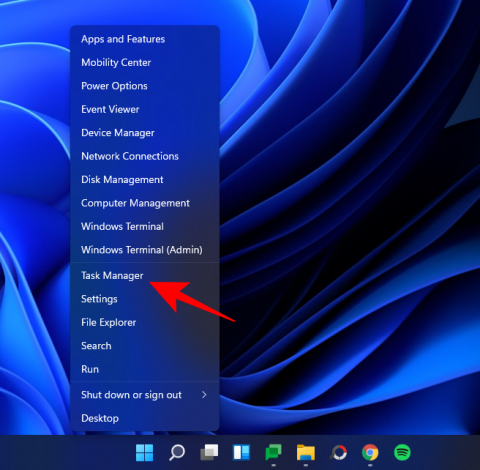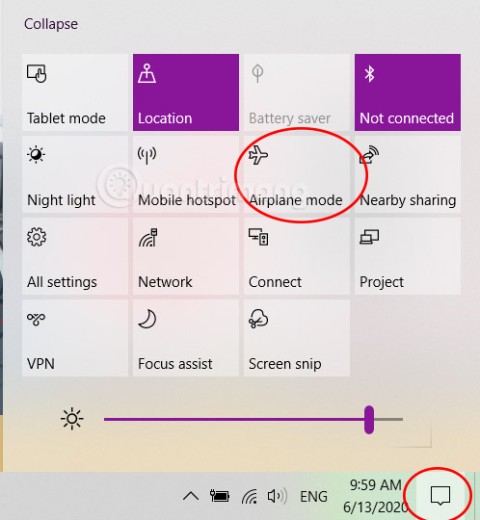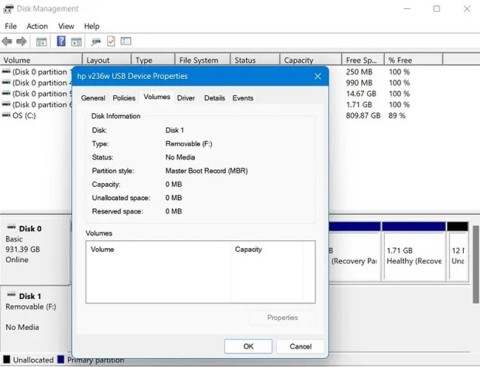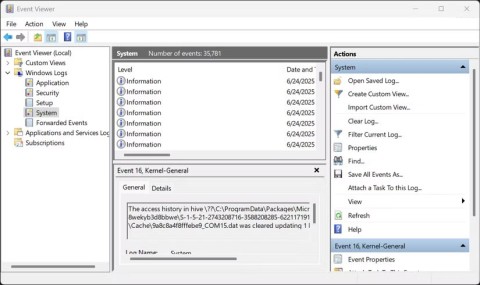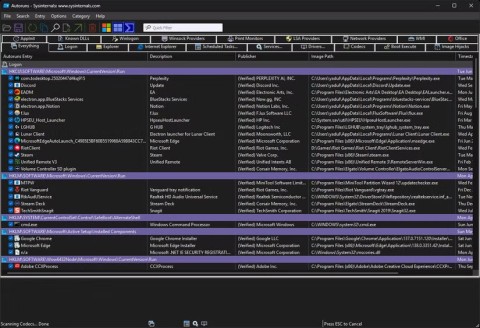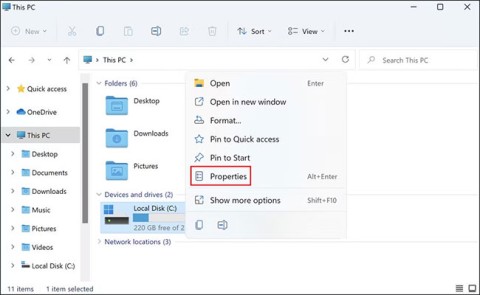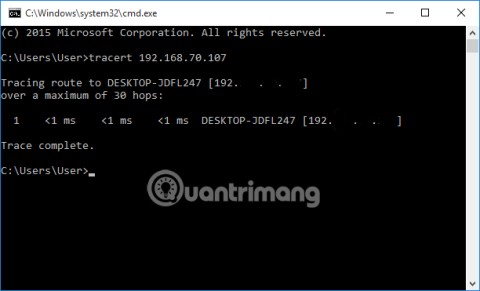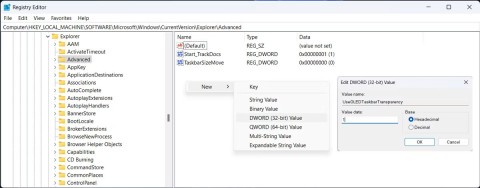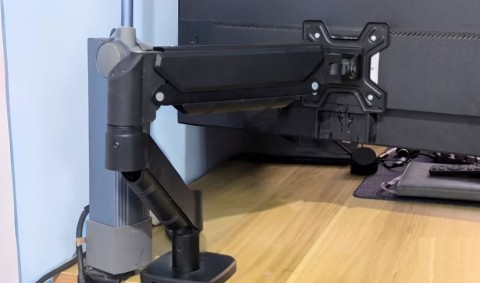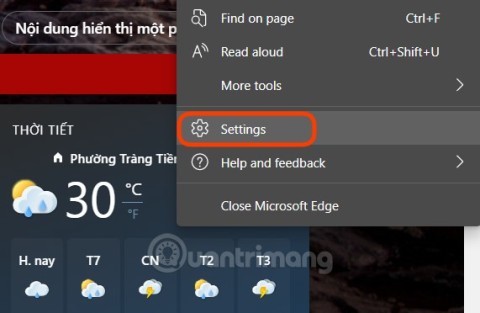
Η Εξερεύνηση των Windows είναι η πύλη στο Graphical User Interface (GUI) με την οποία πλοηγούμαστε στο λειτουργικό σύστημα Windows. Είναι το κέλυφος του χρήστη που επιτρέπει σε κάποιον να εξερευνήσει την επιφάνεια εργασίας, τη Διαχείριση αρχείων, το μενού Έναρξη και τη γραμμή εργασιών και μια σειρά από άλλα πράγματα που συνδέονται με αυτήν. Σε ορισμένες περιπτώσεις, μπορεί να σας ζητηθεί να το επανεκκινήσετε, όπως όταν ένα ή περισσότερα από τα στοιχεία του αρχίσουν να παρουσιάζουν προβλήματα ή εάν η οθόνη σας παγώσει.
Με τα Windows 11, η Microsoft έχει υποστηρίξει σε μεγάλο βαθμό την Εξερεύνηση των Windows και έχει «συγκεντρώσει» την όλη εμπειρία. Αλλά οι τρόποι επανεκκίνησης παραμένουν οι ίδιοι. Εδώ ρίχνουμε μια ματιά στον τρόπο επανεκκίνησης της Εξερεύνησης των Windows και τι συμβαίνει όταν το κάνετε.
Περιεχόμενα
Τι συμβαίνει όταν κάνετε επανεκκίνηση του Windows Explorer (και πότε πρέπει να το κάνετε);
Η επανεκκίνηση της Εξερεύνησης των Windows είναι ακριβώς όπως η επανεκκίνηση οποιασδήποτε άλλης εφαρμογής – τερματίζει τη λειτουργία του κελύφους χρήστη και εκκινεί ξανά τη δημιουργία αντιγράφων ασφαλείας. Αυτό σημαίνει ότι όλες οι διεργασίες που εξαρτώνται από αυτό, όπως η επιφάνεια εργασίας, η γραμμή εργασιών, το μενού "Έναρξη" και η Εξερεύνηση αρχείων θα επαναφορτωθούν, επιλύοντας έτσι τυχόν μικρά προβλήματα που μπορεί να υπήρχαν. Εάν το σύστημά σας παγώνει ή καθυστερεί, η επανεκκίνηση της Εξερεύνησης των Windows είναι συχνά αρκετή για την επίλυση του προβλήματος.
Είναι καλό να γνωρίζετε πώς να το κάνετε, καθώς αυτός είναι ένας από τους πιο γρήγορους τρόπους για να διορθώσετε μια εμπειρία που τραυλίζει στην επιφάνεια εργασίας ή μια γραμμή εργασιών που δεν ανταποκρίνεται. Η Εξερεύνηση των Windows πρέπει να επανεκκινείται κάθε φορά που κάνετε αλλαγές στο μητρώο HKEY_CURRENT_USER, κάτι που είναι ένας ακόμη λόγος για να γνωρίζετε πώς να το κάνετε.
Μπορείτε επίσης απλά να τερματίσετε την Εξερεύνηση των Windows χωρίς να την επανεκκινήσετε. Εάν το κάνετε, θα μείνετε με μια κενή επιφάνεια εργασίας χωρίς γραμμή εργασιών ή το μενού Έναρξη. Ούτε ο εξερευνητής αρχείων θα είναι διαθέσιμος. Αλλά το να το ξαναξεκινήσετε είναι μια δυσκολία.
Σχετικό: Πώς να επαναφέρετε τα Windows 11
Επανεκκινήστε την Εξερεύνηση αρχείων στα Windows 11
Ακολουθούν όλοι οι τρόποι με τους οποίους μπορείτε να επανεκκινήσετε την Εξερεύνηση των Windows στα Windows 11. Σημειώστε ότι παρόλο που οι οπτικές αναφορές που εμφανίζονται σε αυτόν τον οδηγό είναι των Windows 11, αυτές οι μέθοδοι λειτουργούν και για τα Windows 10.
Μέθοδος #01: Χρήση της Διαχείρισης Εργασιών
Αρχικά, ανοίξτε τη Διαχείριση εργασιών πατώντας Ctrl + Shift + Escταυτόχρονα. Εναλλακτικά, μπορείτε επίσης απλώς να κάνετε δεξί κλικ στο μενού Έναρξη και να επιλέξετε Διαχείριση εργασιών .
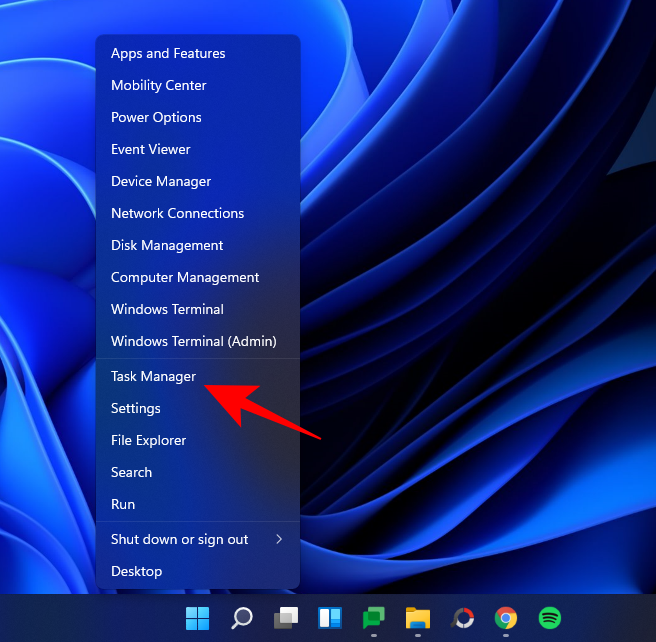
Κάντε κλικ στην επιλογή Περισσότερες λεπτομέρειες εάν η Διαχείριση εργασιών ανοίγει σε μικρογραφία.
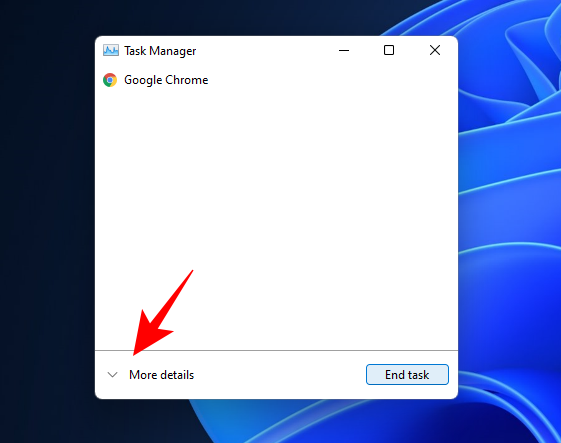
Κάντε κύλιση στις Διαδικασίες και βρείτε την Εξερεύνηση των Windows. Επιλέξτε το και μετά κάντε κλικ στο Restart προς την κάτω δεξιά γωνία.

Τα οπτικά στοιχεία στην οθόνη σας θα εξαφανιστούν στιγμιαία και στη συνέχεια θα επιστρέψουν. Αυτό σημαίνει ότι η Εξερεύνηση των Windows έκλεισε και επανεκκινήθηκε με επιτυχία.
Σχετικό: Πώς να απεγκαταστήσετε τις ενημερώσεις στα Windows 11
Μέθοδος #02: Χρήση Γραμμής εντολών/Τερματικό Windows/PowerShell
Ένας άλλος τρόπος επανεκκίνησης της Εξερεύνησης των Windows είναι μέσω ενός τερματικού των Windows, όπως η Γραμμή εντολών ή το PowerShell. Στο παράδειγμά μας, πηγαίνουμε με το πρώτο, αλλά οι εντολές είναι ίδιες και για τα δύο.
Πατήστε Έναρξη, πληκτρολογήστε cmd (ή powershell) και, στη συνέχεια, κάντε κλικ στο Εκτέλεση ως διαχειριστής .
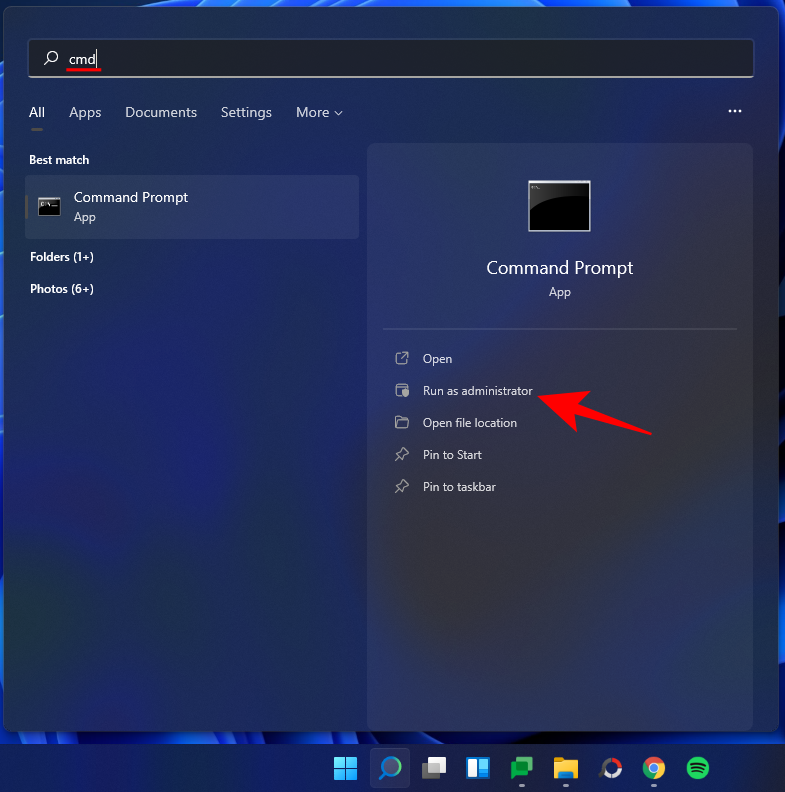
Τώρα πληκτρολογήστε την ακόλουθη εντολή:
taskkill /f /im explorer.exe

Στη συνέχεια πατήστε Enter. Μόλις το κάνετε αυτό, θα δείτε την επιφάνεια εργασίας να γίνεται μαύρη και το μενού Έναρξη και η γραμμή εργασιών να εξαφανίζονται. Αυτό σημαίνει ότι έχετε κλείσει με επιτυχία την Εξερεύνηση των Windows. Για να ξεκινήσετε ξανά τη δημιουργία αντιγράφων ασφαλείας, πληκτρολογήστε την ακόλουθη εντολή:
start explorer.exe

Στη συνέχεια πατήστε Enter. Τα οπτικά στοιχεία θα επιστρέψουν αμέσως.
Μέθοδος #03: Χρήση σεναρίου δέσμης
Μπορείτε επίσης να δημιουργήσετε μια δέσμη ενεργειών για επανεκκίνηση της Εξερεύνησης των Windows, ώστε την επόμενη φορά που θα χρειαστεί να το κάνετε, να χρειάζεται μόνο να κάνετε διπλό κλικ πάνω της. Δείτε πώς:
Κάντε δεξί κλικ στην επιφάνεια εργασίας και επιλέξτε Νέο > Έγγραφο κειμένου .
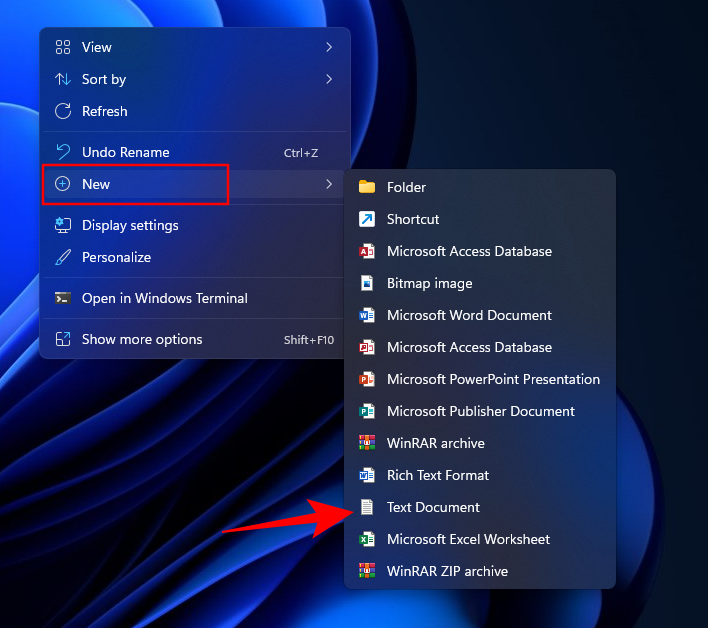
Ανοίξτε αυτό το αρχείο Σημειωματάριο και, στη συνέχεια, πληκτρολογήστε τα εξής:
@echo off
taskkill /f /im explorer.exe
start explorer.exe
Εναλλακτικά, μπορείτε να αντιγράψετε τα παραπάνω και να τα επικολλήσετε στο έγγραφο κειμένου.
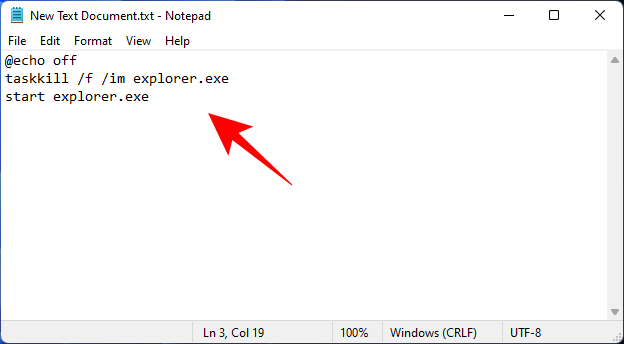
Στη συνέχεια κάντε κλικ στο Αρχείο .
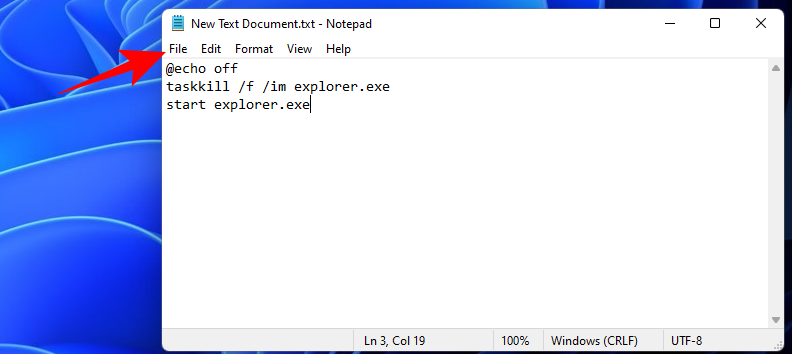
Επιλέξτε Αποθήκευση ως .
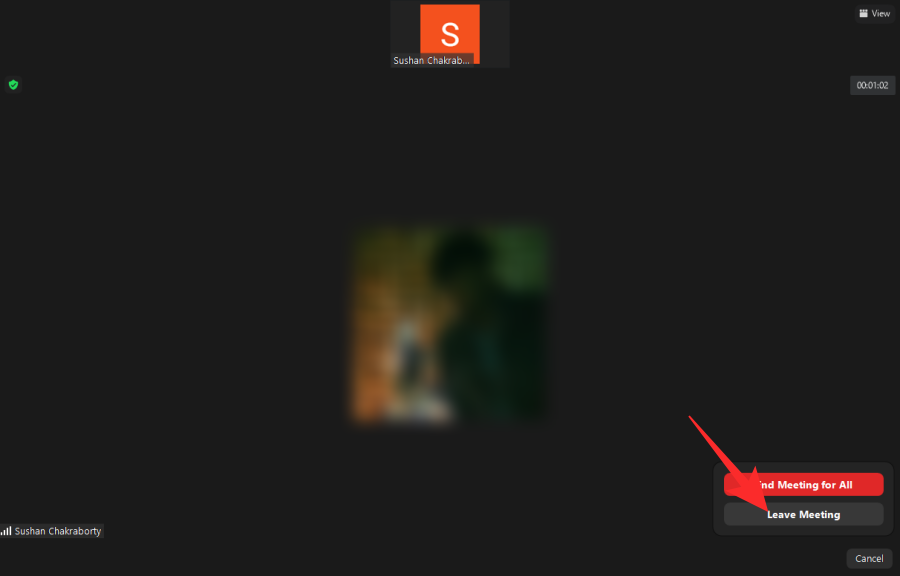
Δώστε σε αυτό το αρχείο ένα όνομα και αποθηκεύστε τις επεκτάσεις του ως .bat . Στη συνέχεια, κάντε κλικ στο αναπτυσσόμενο μενού δίπλα στην επιλογή Αποθήκευση ως τύπου .
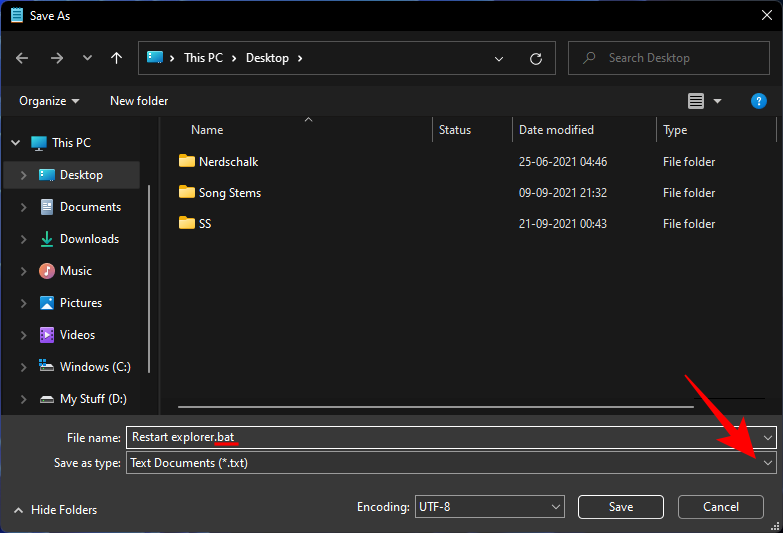
Επιλέξτε Όλα τα αρχεία .
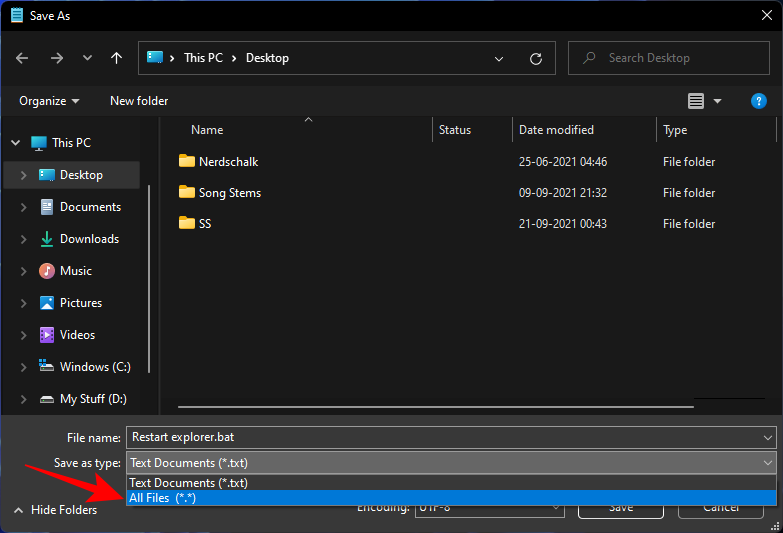
Στη συνέχεια, κάντε κλικ στην επιλογή Αποθήκευση .
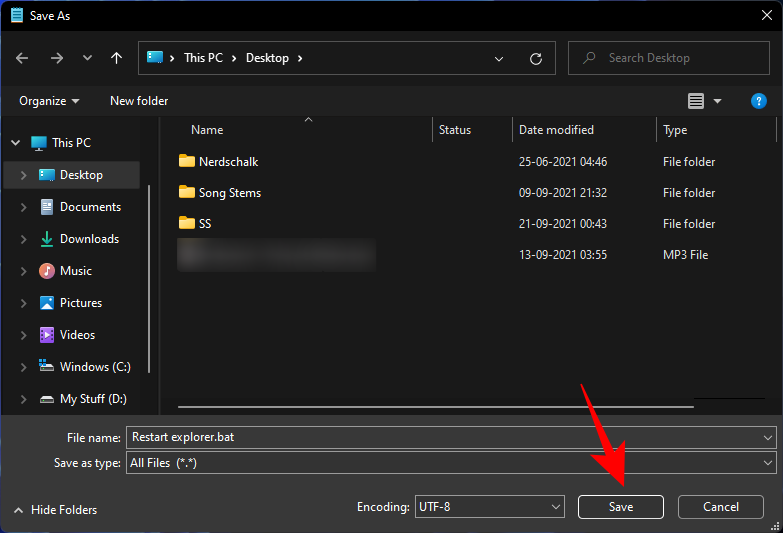
Το ομαδικό αρχείο για επανεκκίνηση της Εξερεύνησης των Windows δημιουργείται τώρα στην επιφάνεια εργασίας. Όποτε χρειαστεί να επανεκκινήσετε την Εξερεύνηση των Windows στη συνέχεια, απλώς κάντε διπλό κλικ σε αυτό το αρχείο .bat.
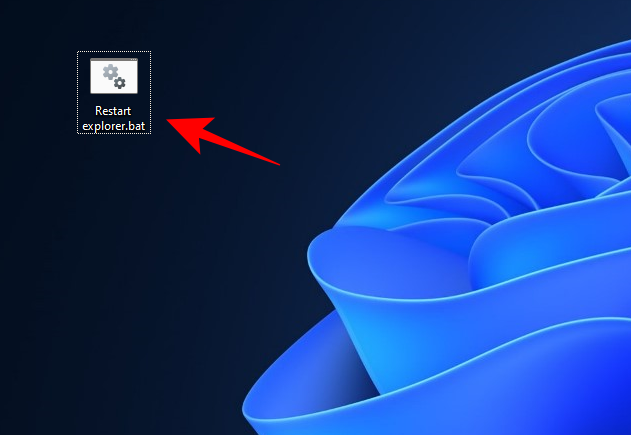
Εάν οι προαναφερθείσες μέθοδοι σας φαίνονται πολύ περίπλοκες, μπορείτε να προσθέσετε μια επιλογή επανεκκίνησης της Εξερεύνησης των Windows στο μενού περιβάλλοντος για ευκολότερη πρόσβαση. Ωστόσο, για να το κάνετε αυτό, θα πρέπει να δημιουργήσετε ένα αρχείο μητρώου ειδικά για την εργασία. Δείτε πώς να το κάνετε:
Ανοίξτε ένα έγγραφο κειμένου (αρχείο Σημειωματάριου) όπως φαίνεται πριν. Στη συνέχεια πληκτρολογήστε τα εξής:
Windows Registry Editor Version 5.00
[HKEY_CLASSES_ROOT\DesktopBackground\Shell\Restart Explorer]
"icon"="explorer.exe"
"Position"="Bottom"
"SubCommands"=""
[HKEY_CLASSES_ROOT\DesktopBackground\Shell\Restart Explorer\shell\01menu]
"MUIVerb"="Restart Explorer Now"
[HKEY_CLASSES_ROOT\DesktopBackground\Shell\Restart Explorer\shell\01menu\command]
@=hex(2):63,00,6d,00,64,00,2e,00,65,00,78,00,65,00,20,00,2f,00,63,00,20,00,74,\
00,61,00,73,00,6b,00,6b,00,69,00,6c,00,6c,00,20,00,2f,00,66,00,20,00,2f,00,\
69,00,6d,00,20,00,65,00,78,00,70,00,6c,00,6f,00,72,00,65,00,72,00,2e,00,65,\
00,78,00,65,00,20,00,20,00,26,00,20,00,73,00,74,00,61,00,72,00,74,00,20,00,\
65,00,78,00,70,00,6c,00,6f,00,72,00,65,00,72,00,2e,00,65,00,78,00,65,00,00,\
00
[HKEY_CLASSES_ROOT\DesktopBackground\Shell\Restart Explorer\shell\02menu]
"MUIVerb"="Restart Explorer with Pause"
"CommandFlags"=dword:00000020
[HKEY_CLASSES_ROOT\DesktopBackground\Shell\Restart Explorer\shell\02menu\command]
@=hex(2):63,00,6d,00,64,00,2e,00,65,00,78,00,65,00,20,00,2f,00,63,00,20,00,40,\
00,65,00,63,00,68,00,6f,00,20,00,6f,00,66,00,66,00,20,00,26,00,20,00,65,00,\
63,00,68,00,6f,00,2e,00,20,00,26,00,20,00,65,00,63,00,68,00,6f,00,20,00,53,\
00,74,00,6f,00,70,00,70,00,69,00,6e,00,67,00,20,00,65,00,78,00,70,00,6c,00,\
6f,00,72,00,65,00,72,00,2e,00,65,00,78,00,65,00,20,00,70,00,72,00,6f,00,63,\
00,65,00,73,00,73,00,20,00,2e,00,20,00,2e,00,20,00,2e,00,20,00,26,00,20,00,\
65,00,63,00,68,00,6f,00,2e,00,20,00,26,00,20,00,74,00,61,00,73,00,6b,00,6b,\
00,69,00,6c,00,6c,00,20,00,2f,00,66,00,20,00,2f,00,69,00,6d,00,20,00,65,00,\
78,00,70,00,6c,00,6f,00,72,00,65,00,72,00,2e,00,65,00,78,00,65,00,20,00,26,\
00,20,00,65,00,63,00,68,00,6f,00,2e,00,20,00,26,00,20,00,65,00,63,00,68,00,\
6f,00,2e,00,20,00,26,00,20,00,65,00,63,00,68,00,6f,00,20,00,57,00,61,00,69,\
00,74,00,69,00,6e,00,67,00,20,00,74,00,6f,00,20,00,73,00,74,00,61,00,72,00,\
74,00,20,00,65,00,78,00,70,00,6c,00,6f,00,72,00,65,00,72,00,2e,00,65,00,78,\
00,65,00,20,00,70,00,72,00,6f,00,63,00,65,00,73,00,73,00,20,00,77,00,68,00,\
65,00,6e,00,20,00,79,00,6f,00,75,00,20,00,61,00,72,00,65,00,20,00,72,00,65,\
00,61,00,64,00,79,00,20,00,2e,00,20,00,2e,00,20,00,2e,00,20,00,26,00,20,00,\
70,00,61,00,75,00,73,00,65,00,20,00,26,00,26,00,20,00,73,00,74,00,61,00,72,\
00,74,00,20,00,65,00,78,00,70,00,6c,00,6f,00,72,00,65,00,72,00,2e,00,65,00,\
78,00,65,00,20,00,26,00,26,00,20,00,65,00,78,00,69,00,74,00,00,00
Για να απλοποιήσετε τη διαδικασία, απλώς αντιγράψτε τα παραπάνω και επικολλήστε τα στο αρχείο σημειωματάριων.
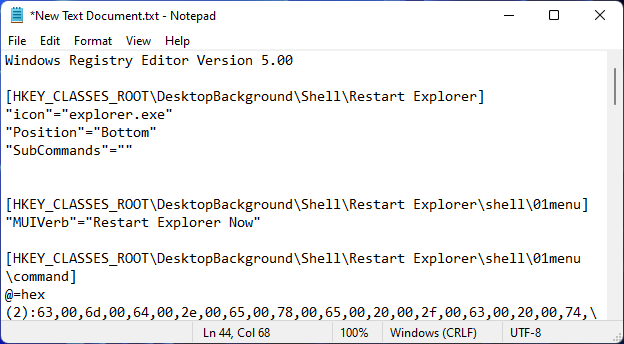
Στη συνέχεια κάντε κλικ στο Αρχείο .

Επιλέξτε Αποθήκευση ως .
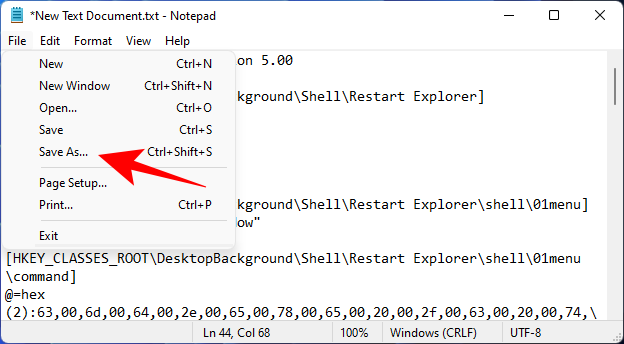
Δώστε σε αυτό το αρχείο ένα όνομα και τελειώστε με .reg . Στη συνέχεια, κάντε κλικ στο αναπτυσσόμενο μενού δίπλα στην επιλογή Αποθήκευση ως τύπου .
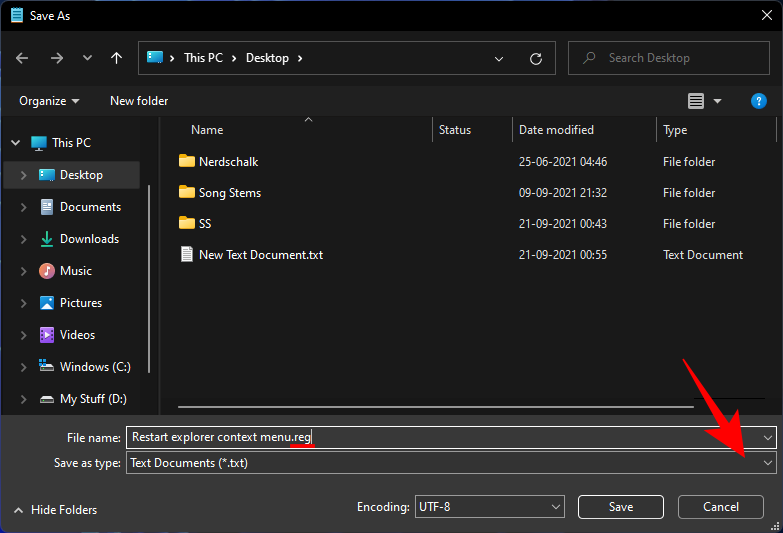
Επιλέξτε Όλα τα αρχεία .
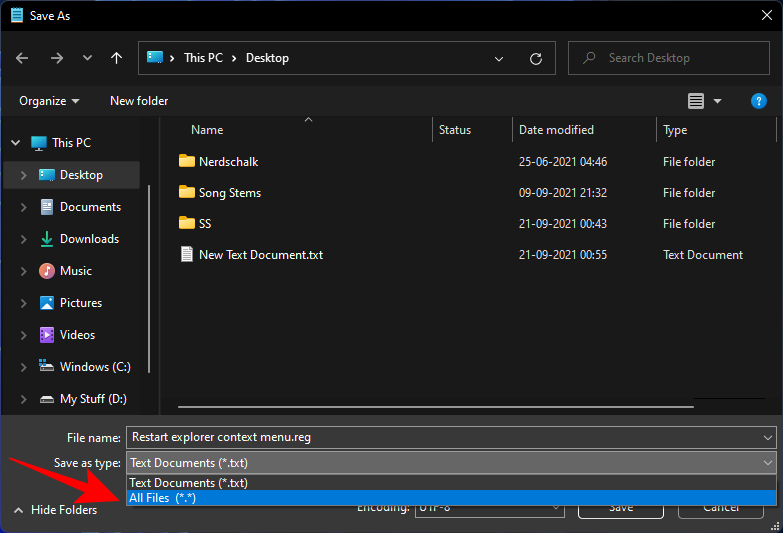
Κάντε κλικ στο Αποθήκευση .

Τώρα κάντε διπλό κλικ σε αυτό το αρχείο μητρώου που δημιουργήθηκε πρόσφατα.
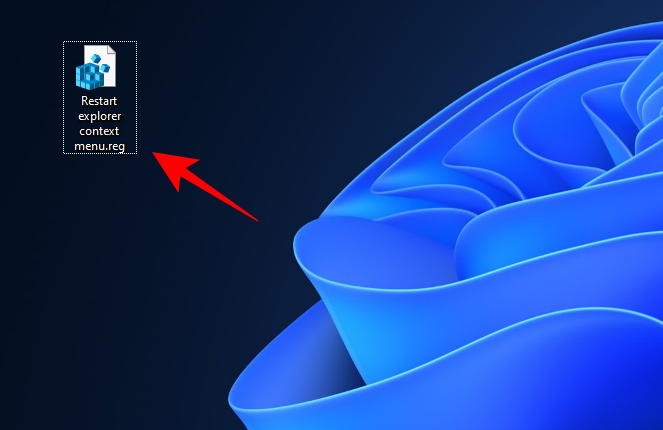
When prompted, click Yes.
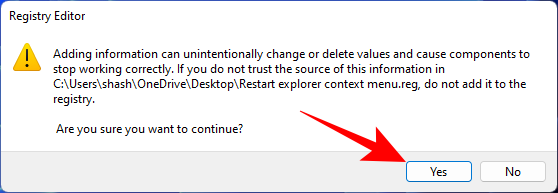
You will now get a confirmation message that the keys and values in this file are successfully added to the registry. Click OK.
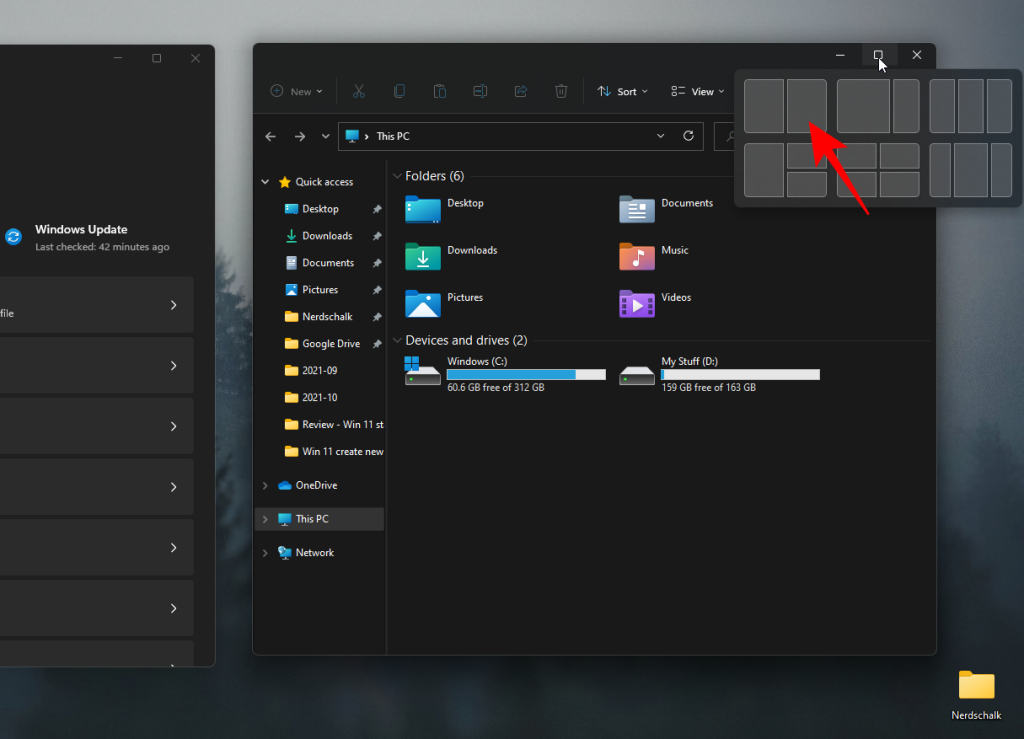
To see the new context menu option to Restart Windows Explorer, right-click on the desktop and select Show more options.
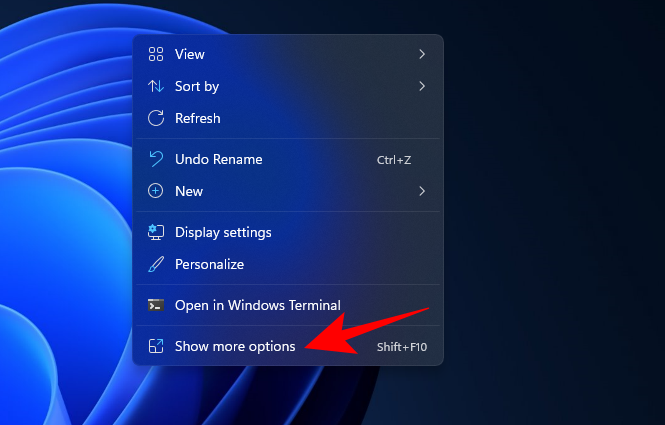
The option to Restart Explorer will be at the bottom. Hover over it to get the options to Restart Explorer Now or Restart Explorer with Pause.
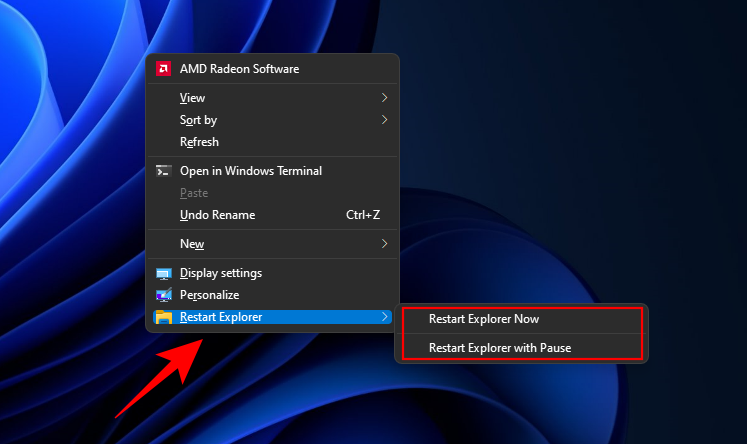
If you’d like to remove this option, create a notepad file and paste the content mentioned below in it.
Windows Registry Editor Version 5.00
[-HKEY_CLASSES_ROOT\DesktopBackground\Shell\Restart Explorer]

Then click on File > Save as.
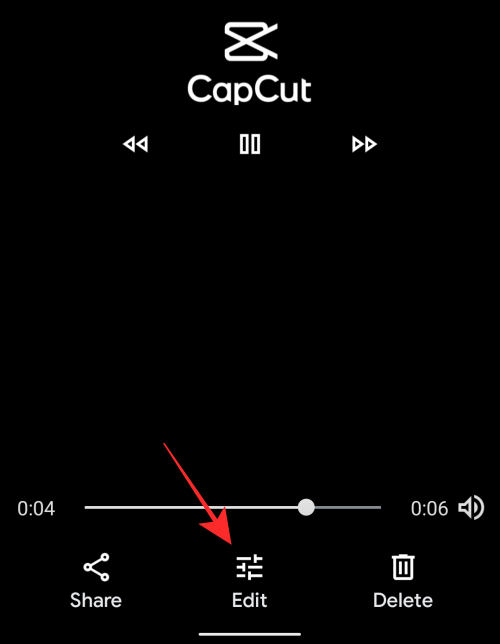
Save the file as a .reg file as we did before and save file type as ‘All files’. Then click Save.
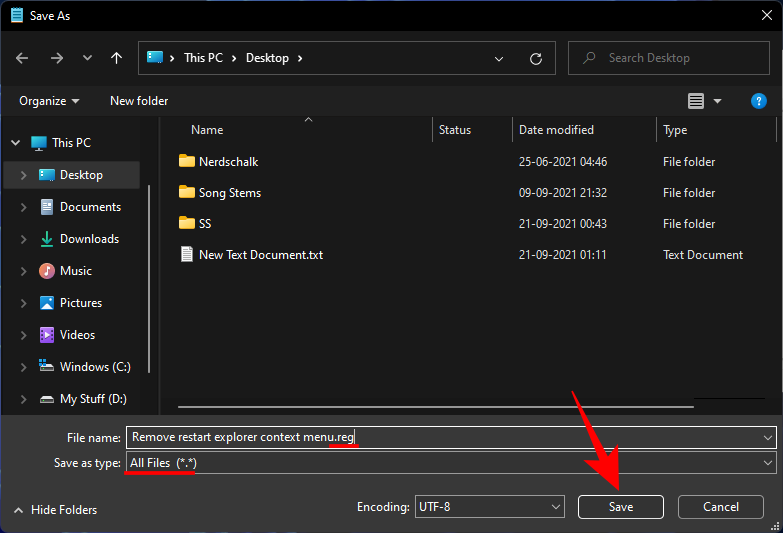
Then double-click this newly created registry file.
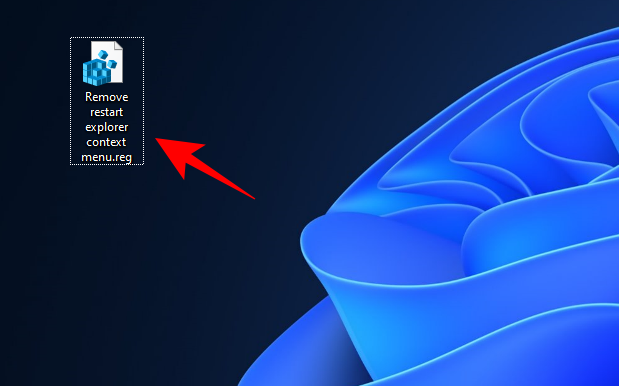
When prompted, click Yes, then click OK.

The option to restart Explorer from the Context Menu will no longer be available.
Fix: Windows Explorer has stopped working
The number one fix to Windows Explorer problems is to restart Windows Explorer using any of the methods mentioned above. This gives all the visual elements of the user shell a soft reboot, allowing them to load the data again and fix any issues that they might be having.
But there are a few other potential fixes that you may want to check out as well. Here they are:
Run SFC scan
Windows Explorer may be encountering issues due to corrupt system files. Here’s how you can check for the same and fix it:
Press Start, type cmd, and click on Run as administrator.

Now type the following command:
sfc /scannow

Then press Enter. This will start the System File Checker scan. You may have to wait a while before the process is finished.
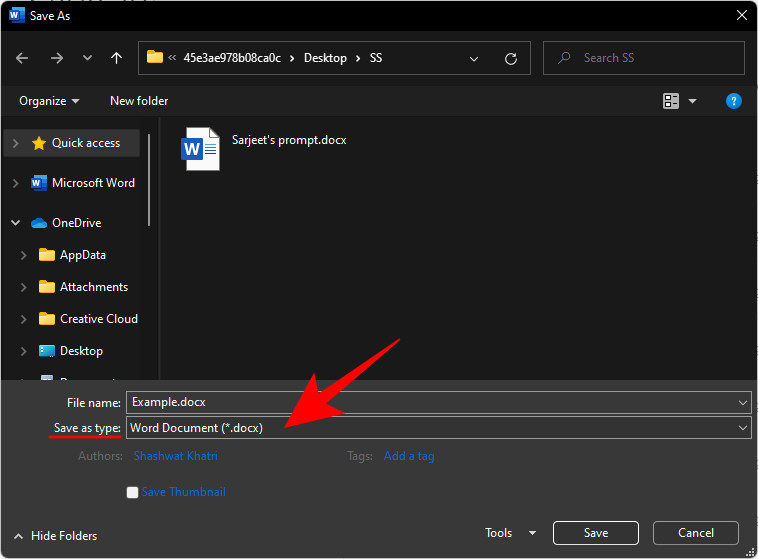
SFC Scan will find any potential problems and fix them for you.
Reboot in Safe Mode to identify the problem
Sometimes, corrupt third-party applications may be the cause of the problem. But to make sure this is the case, we have to reboot the PC in Safe Mode first. Here’s how to do so:
Press Start and click on the ‘Power’ button.

Then, while holding down the ‘Shift’ key, click on Restart.

Now, while the computer is restarting, you will be taken to the Advanced Restart options. Select Troubleshoot.
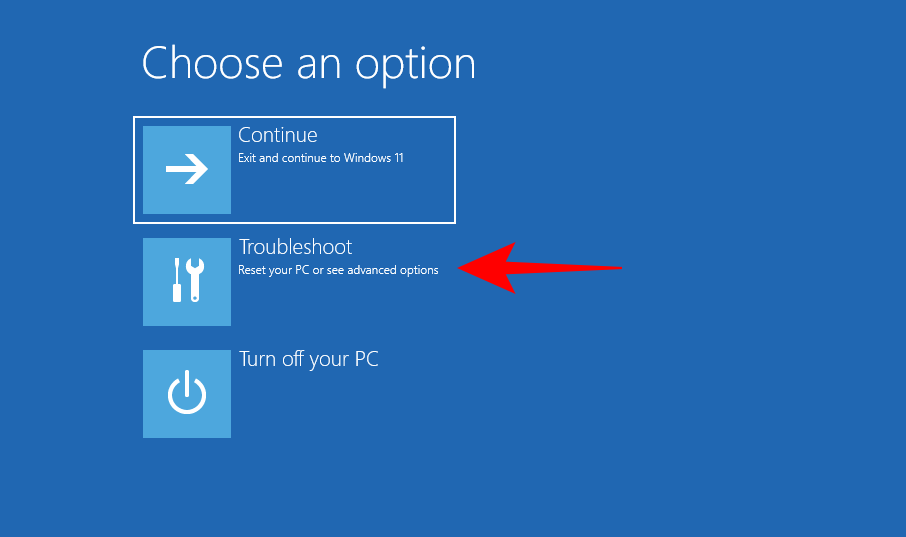
Click on Advanced options.
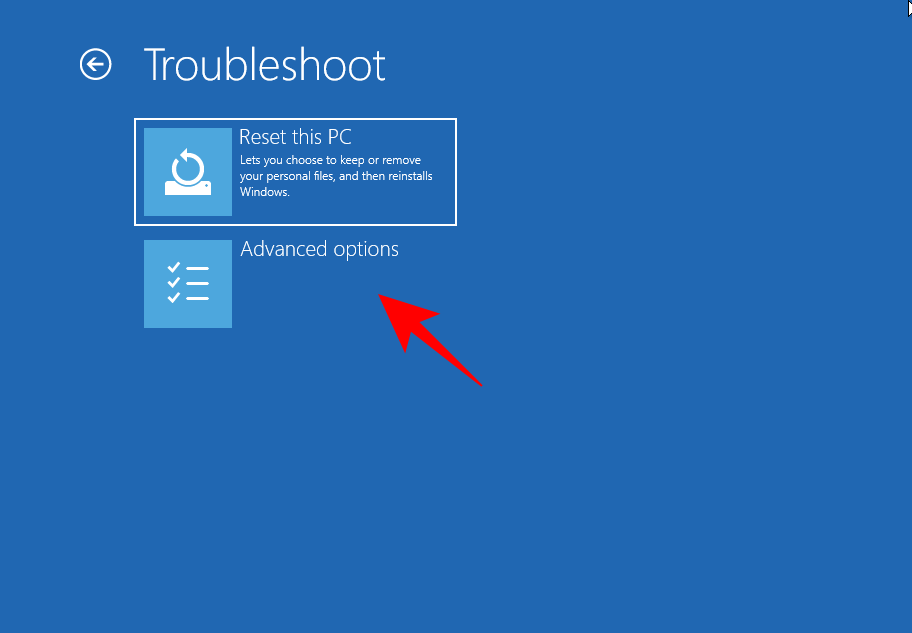
Click on Startup Settings.
Click Restart.
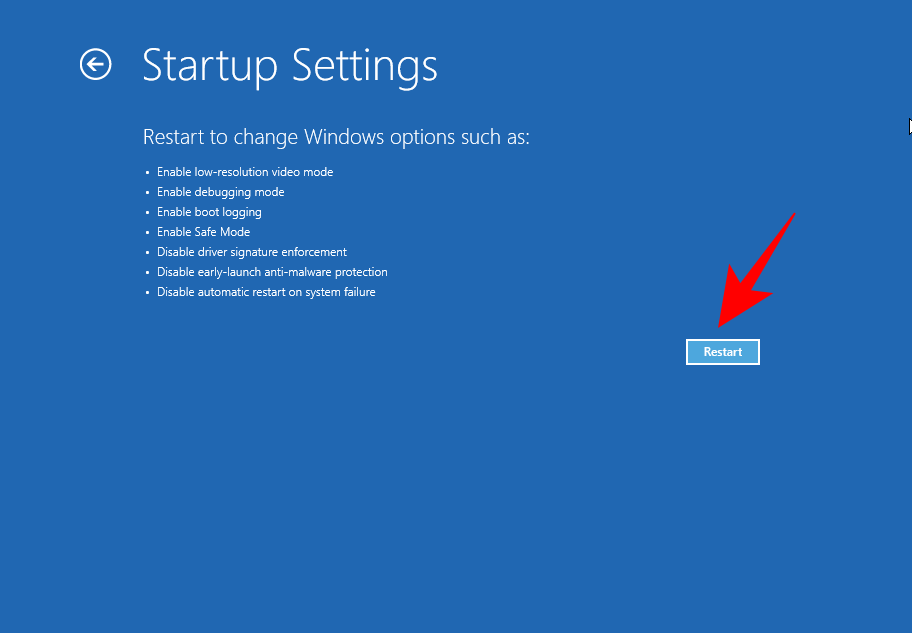
Now press the number that corresponds to Enable Safe Mode with Networking.
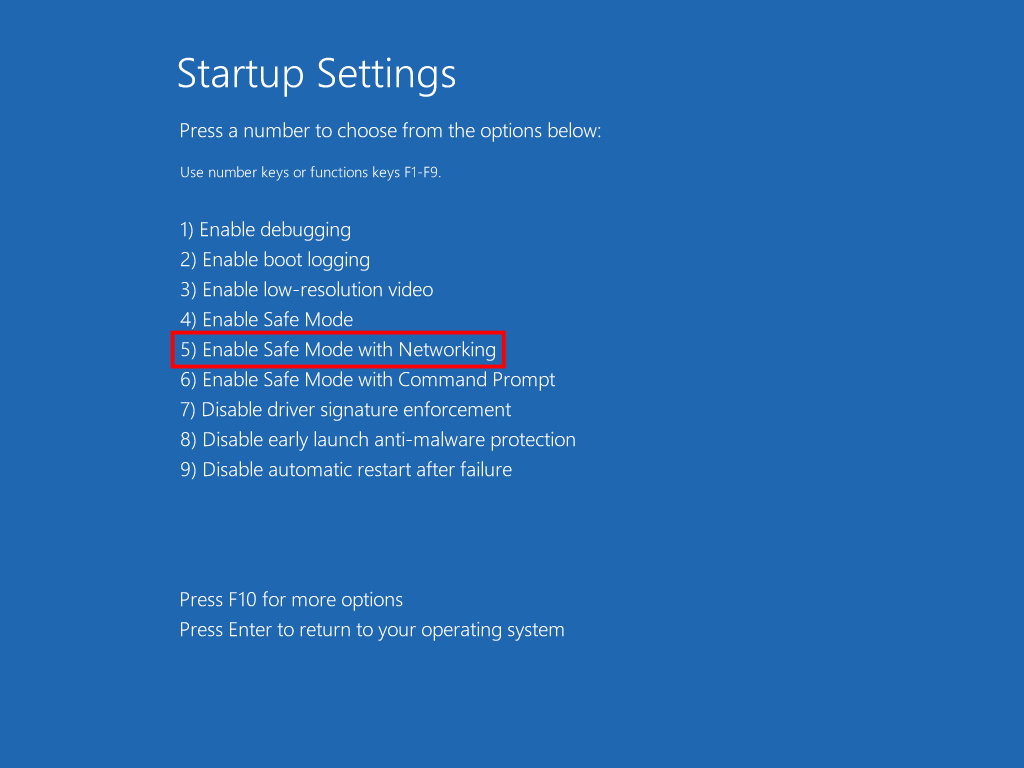
Check if the problem still persists in Safe Mode. If it does, here’s what you need to do.
Boot the computer back up normally, then press Start, type msconfig, and click on Run as administrator.
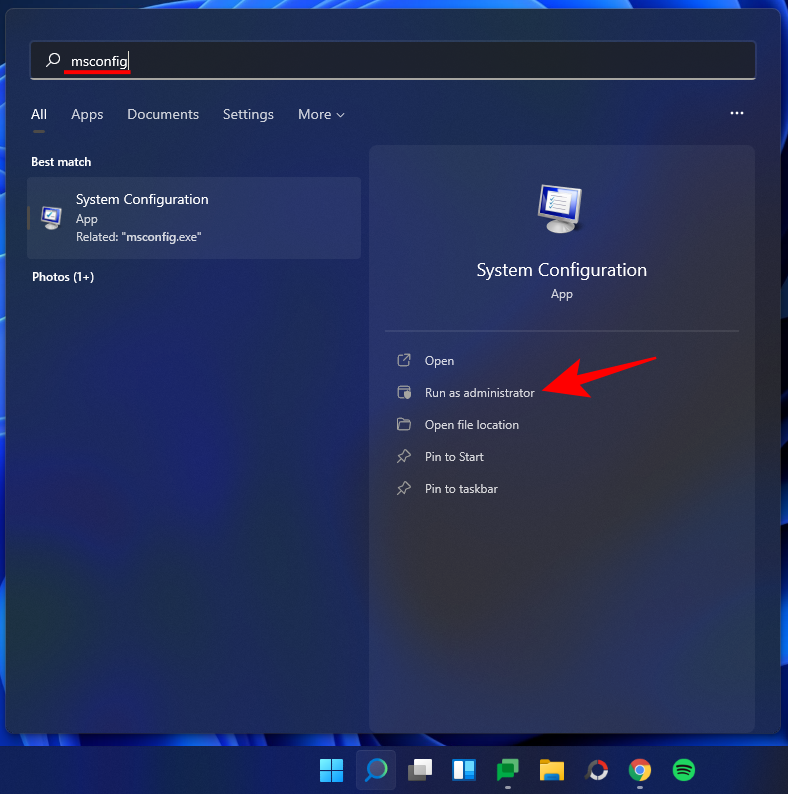
Under the ‘General’ tab, make sure to select Selective startup, but uncheck Load startup items.
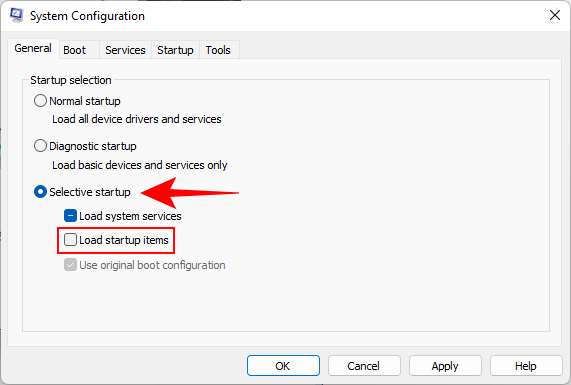
Then switch over to the ‘Services’ tab.
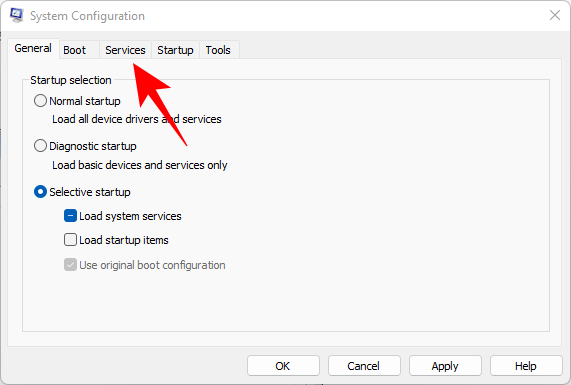
Here, click on Hide all Microsoft services at the bottom to select it. Then click Disable all.
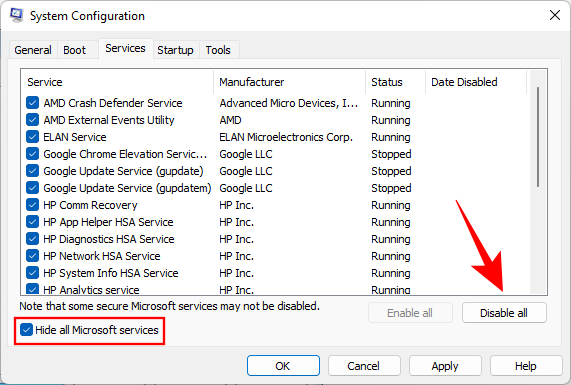
Click OK.
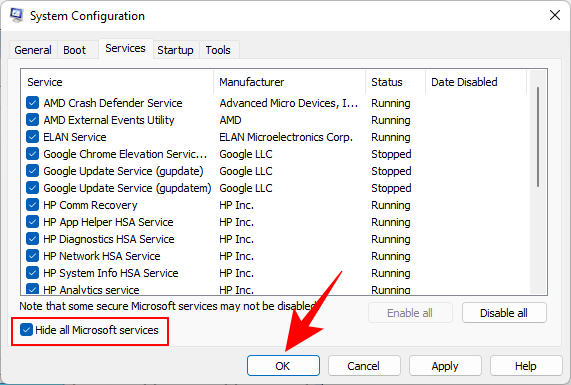
Restart your PC normally. If Windows Explorer is working fine, then the issue was caused most likely by a third-party app. You may need to hunt down exactly which program was interfering with the proper functioning of Windows Explorer.
We recommend uninstalling any recent apps that you may have installed around the time when this problem started to appear.
Scan for viruses
You should definitely run a full virus scan with your anti-virus program to find any viruses or malware lurking in your computer. Viruses come in various kinds and have the capacity to wreak havoc on your system, and a non-functioning Windows Explorer is one of the major symptoms.
Frequently Asked Questions (FAQs)
Windows Explorer is tied to a variety of visual elements that we as users interact with on a daily basis. It is only natural then to have questions about its functioning and what all you can do after you end or restart it. Here we answer a few commonly asked queries so you have all the information you need to make adjustments to Windows Explorer.
Is it safe to end Windows Explorer?
Yes, it is safe to end Windows Explorer. Doing so won’t lead to any problems. In fact, it may possibly fix the problems its elements may be experiencing. However, if you only end Windows Explorer without starting it up back again, you won’t have access to those very elements that have made Windows 11 stand out from its predecessors.
How often should I restart Windows Explorer?
Under normal circumstances, you won’t need to restart Windows Explorer at all. One of the main reasons why people restart Windows Explorer is when they’ve made changes to the registry the HKEY_CURRENT_USER registry key and need to see the changes implemented.
Other than that, Windows Explorer will require a soft reboot if one or more of its elements begin to malfunction. But if you’re constantly having to restart Windows Explorer, the problem may be found elsewhere. Refer to our fixes above to sort this issue.
Why does Windows Explorer keep crashing?
There are a few reasons why Windows Explorer may not be working as usual. But viruses within third-party applications downloaded from unknown or untrustworthy sources is one of the common cause for this. Windows Update too can introduce Explorer bugs with recent updates, especially if you’re on the Dev channel, although it’s not often the case.
Is any data lost when restarting Windows Explorer?
No, your data is not lost when you restart Windows Explorer. All your files and applications will return to the state in which they were when you restarted Windows Explorer. The only elements that are impacted are the UI elements that are dependent on Windows Explorer, such as the desktop, the Start Menu, File Explorer, and the taskbar.
Do copy paste keep working or get stopped?
Yes, the copy-paste function still keeps working when you end or restart Windows Explorer.
Can you reopen the same windows again after restarting Windows Explorer?
Yes, you can open the same windows again after restarting Windows Explorer. However, if you were using File Explorer to navigate through your drives and folders, you will have to open it up from the beginning and get to the folders you were accessing when you restarted Windows Explorer.
So these were the ways that you can restart Windows Explorer and when you should be doing so. We hope you now have a better understanding of the processes of Windows Explorer and the ways to manage them.
RELATED

